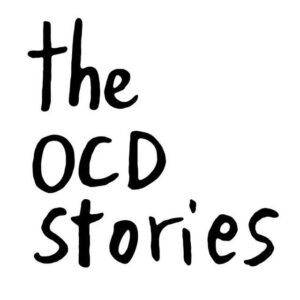Do you find yourself constantly checking to make sure you are breathing correctly? If so, you may be experiencing symptoms of somatic OCD. This type of OCD is characterized by obsessive thoughts and compulsions related to bodily functions and sensations. In this blog post, we will discuss ways to stop manual breathing.
Contents
What is Manual Breathing and Somatic OCD

The act of consciously controlling your breath is known as manual breathing. Deep breathing, abdominal breathing, and diaphragmatic breathing are also names for this type of breathing.
Manual breathing prevents your body from doing what it is designed to do. As a result, you’re forcing yourself to take deep breaths to get more oxygen into your body. As a result, this type of breathing accomplishes the opposite of what you intended. you feel dizzy and lightheaded because less oxygen gets to your brain.
ManuallyyBreathing can be a sign of Somatic OCD in which a person usually focus on his breathing excessively.
Somatic OCD
Somatic OCD is a type of OCD that is characterized by obsessions and compulsions related to bodily functions and sensations. People with somatic OCD may obsessively worry about their breathing, heart rate, or blood pressure. They may also have fears about contracting a disease or becoming injured. These obsessions can lead to compulsive behaviors such as constantly checking one’s pulse or breathing, excessively washing hands, or avoiding activities that may trigger the obsessions.
Most people with OCD feel compelled to do compulsions to alleviate their anxiety. Someone who has OCD frequently believes that if they don’t perform their compulsions, something terrible will happen. However, compulsions only provide temporary relief and can make OCD symptoms worse in the long run.
Someone with harm OCD, for example, may be concerned that they will harm their partner despite having no evidence of past aggressiveness. This thought can rapidly turn into anxiety and may even cause a panic attack. The person with harm OCD may start avoiding their partner or obsessively checking on them to make sure they are safe.
There is no single cause of somatic OCD. However, several risk factors may increase one’s likelihood of developing the disorder. These risk factors include:
- Family history: OCD often runs in families, so if you have a relative with OCD, you may be more likely to develop the disorder.
- Trauma: Traumatic events can trigger OCD symptoms.
- Stressful life events: Stressful life transitions such as moving, starting a new job, or getting married can trigger OCD symptoms.
- Personality traits: People with OCD, often have perfectionistic and detail-oriented tendencies
Symptoms of Manual Breathing

The symptoms of manual breathing are :
– Checking to make sure you are breathing correctly
– Worrying about your breathing, heart rate, or blood pressure
– Fearing that you will contract a disease or become injured
– Constantly checking your pulse or breathing
– Excessively washing your hands
– Avoiding activities that may trigger your obsessions
Treatment For Manual Breathing

Here are a few ways that will help you to stop manual breathing:
Cognitive Behavioural Therapy
Anxiety disorders can be effectively treated with Cognitive Behavioral Therapy (CBT). The cognitive approach and the behavioral approach are integrated into CBT to understand and treat psychological disorders. CBT for Manual Breathing generally includes exposure and response prevention (ERP).
CBT involves gradually exposing oneself to the thoughts, objects, or situations that trigger anxiety and learning to resist the urge to perform compulsions. For example, someone with harm OCD may be asked to refrain from checking on their partner for a set period. A therapist does CBT accompanying individual or group sessions, or one can do it on his own through self-help resources.
CBT helps in reducing manual breathing by
Composure therapy: In this, you will be exposed to the situations which you fear and avoid. This will help you in learning to cope with your fear and anxiety.
Response prevention: In this, you will learn to resist the urge to perform compulsions. This will help in reducing the frequency of your compulsions.
Exposure Response Prevention Therapy
Exposure and response prevention (ERP) is a type of CBT that is effective in stopping manual breathing. ERP involves gradually exposing oneself to the thoughts, objects, or situations that trigger anxiety and learning to resist the urge to perform compulsions.
A therapist can efficiently carry out ERP sessions but you can also do it on your own. If you are doing ERP on your own, it is important to make sure that you are mentally and emotionally prepared to handle the anxiety that will come up during exposure therapy. It is also important to have a plan in place for how you will deal with urges to perform compulsions.
Exposure and Response Prevention (ERP) is the most widely used behavioral therapy for stopping manual breathing exposure treatment involves direct (in-vivo) or imagined exposure to objects or situations that trigger obsessive behaviors that trigger anxiety. Once these cues are exposed repeatedly, anxiety decreases until eventually, exposure does not arouse any anxiety. Habituation is the process of becoming accustomed to something.
Types of Exposure
There are two types of exposure mainly:-.
In vivo exposure: This involves exposing you to real-life situations which you have been avoiding. For example, if you have a fear of flying, in vivo exposure would involve you getting on a plane.
Imaginal exposure: This is where you expose yourself to the feared situation by imagining it in your mind. For example, if you fear snakes, an imaginal exposure would involve you picturing yourself in a room full of snakes. Both types of exposure are equally effective, so it is up to you to decide which one
Mindfulness-Based Behavioral Therapy
Mindfulness-based behavioral therapy (MBBT) is a type of CBT that integrates mindfulness into the treatment process. Mindfulness is a state of being present and aware of the current moment, without judgment. MBBT for stopping manual breathing generally includes exposure and response prevention (ERP ), as well as mindfulness training.
The goal of MBBT is to help you become more aware of your thoughts and feelings in the present moment and to learn to observe them without judgment. This can help you to develop a more accepting attitude towards your OCD thoughts and symptoms.
MBBT is effective in treating Manual Breathing, and it may be beneficial for those who have difficulty with traditional exposure and response prevention (ERP) therapy. MBBT incorporates informal mindfulness practices, such as mindfulness of the breath, into the treatment process. The goal of MBBT is to help you develop a more accepting attitude towards your OCD thoughts and symptoms. If you want to pursue MBBT for manual breathing, it is essential to find a trained therapist
Medications

There are several types of medications that can be used to treat manual breathing, including antidepressants, anti-anxiety medications, and antipsychotic medications. Psychiatrists mostly prescribe Anti-Depressants for OCD. The most commonly prescribed type of antidepressant for OCD is Selective serotonin reuptake inhibitors (SSRIs). SSRIs work by increasing levels of serotonin in the brain. Serotonin is a neurotransmitter that regulates mood.
SSRIs are the first-line treatment for OCD, as they have the most evidence to support their use for this condition. Some examples of SSRIs for manual breathing include fluoxetine (Prozac), paroxetine (Paxil), and sertraline (Zoloft). Anti-anxiety medications, such as benzodiazepines, can help to stop manual breathing. Benzodiazepines work by reducing anxiety and relaxing muscles. Since they are addictive, their use is only for a short-term period. Nenzodiazepines like alprazolam (Xanax) and lorazepam (Ativan) treats manual breathing.
Antipsychotic medications help in stopping manual breathing, thus eventually eliminating the symptoms too. Antipsychotics work by reducing psychotic symptoms, such as delusions and hallucinations. Olanzapine (Zyprexa) and risperidone (Risperdal) help in treating Obsessive Compulsive Disorder.
Self Care Method
Self-care is a method that can help you to cope with anxiety and stress. It involves activities that are relaxing and nourishing, such as yoga, meditation, and spending time in nature. Self-care can be a valuable part of your OCD treatment plan. It can help to reduce your overall anxiety level and make it easier to cope with difficult thoughts and emotions.
When choosing self-care activities, it is important to select activities that are truly relaxing and enjoyable for you. If an activity feels like a chore, it is probably not going to help reduce your stress levels. Hobbies can help you in the long run to develop a great personality.
There are many different self-care activities that you can try. Some people find that yoga, Tai Chi, or other forms of exercise help reduce stress. Others find that listening to calming music, spending time in nature, or journaling can be helpful. Journaling or simply making notes can help you a lot with ur mind. Writing down thoughts can serve as a distraction from intrusive thoughts. It can also help you to track your treatment progress, and to have a record of your successes. Experiment and find what works best for you.
Benefits of Stopping Manual Breathing
There are many benefits to stopping manual breathing. The most obvious benefit is that it can help to improve your overall health. Manual breathing can lead to several health problems, such as high blood pressure, anxiety, and depression. If you can stop manual breathing, you will likely see a reduction in these symptoms.
Another benefit of stopping manual breathing is that it can help to improve your quality of life. If you are constantly worrying about your breathing, it can be difficult to enjoy your everyday activities. Once you stop manual breathing, you may find that you have more energy and free time to do the things you love.
Finally, stopping manual breathing can help to reduce your risk of developing more serious health problems in the future. Manual breathing can put a strain on your heart and lungs, and it can also lead to other respiratory problems. If you stop manual breathing, you will be less likely to develop these serious health conditions.
Final Thoughts
So if you want to know ‘How to stop manual breathing’, follow the steps above. It is a part of Somatic OCD. Somatic OCD can be a debilitating condition, but there are effective treatments available. Exposure and response prevention (ERP) therapy is the most effective treatment for OCD. MBBT is a type of CBT that integrates mindfulness into the treatment process and may be especially helpful for those who have difficulty with traditional ERP.
Self-care is a method that can help you to cope with anxiety and stress. It involves activities that are relaxing and nourishing, such as yoga, meditation, and spending time in nature. Self-care can be a valuable part of your Manual Breathing treatment plan.
If you are struggling with somatic manual breathing, it is important to seek professional help. You can reach out to us by booking a free online therapy or you can download our free OCD treatment app on Android or iOS.


